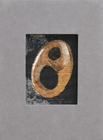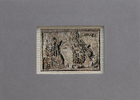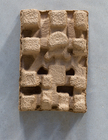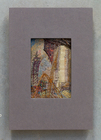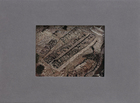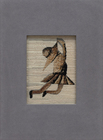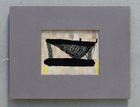As far back as I can remember, black was there, like a part of life:
in people, in the landscape, in solitude.
It was always like something in movement,
like shouting that represented life and not death.
Sometimes it was a figure in black that went by and disappeared,
on other occasions it was a black cloud on top of the blues and greys
of the sky and the reds and ochre yellows of the earth.
Sometimes the very absence of black reminds us that it was once there.
José Guerrero, ‘The Presence of Black in Painting’ in Marta González, 'A Selection of Guerrero’s Writings', Guerrero, exh. cat., Museo Nacional Centro de Arte Reina Sofía, Madrid, 1994
*
[…]
The desire to establish rhythms and patterns in the everyday acts as a means of staving off chaos, of ordering the disparate in order to see through the tenuousness of connections to an underlying line or grid, which forms a base or ground (even if this also turns out to be fragile). If we can say that this is also - partly - a portrait of painting itself, as well as being a schematic description of systems of thought reliant on more or less solid structures, we can also see immediately a limit point: i.e. painting generally exists on one side of its ground only, and likewise, thought demanding a solid base will always come up against the fragility of its support.
If, on the other hand, you draw attention to the support itself, you are able to shift the plane of operation beyond the limit of the surface and such a strategy adds the dynamism of a network of connections into the viewing experience, emphasising the embodied nature of this experience, physically putting the body into motion. This is what allows Narelle Jubelin’s work to work, because it brings the space of the object and its location into an explicitly energetic - or perhaps even animated - relation with the viewer.
[…]
Jubelin draws lines between ideas and potential conversations, laying out a particular diagram of connections - let’s call it a ‘circuit diagram’ - which is also an imaginary dialogue between artists who cannot meet, but who are nonetheless linked in the artist’s thought. By loosening the viewer’s relation to surface, Jubelin draws attention to the work’s circulation as object and idea and to the pathways of exchange along which all work passes: her own and that of her precursors, whom she acknowledges and wishes to draw into dialogue.
In particular, her conversation engages with relations of force and unequal exchange between artists operating at the ostensible centre of an international art world and those entering that world from an assumed marginal place, finding themselves simultaneously at home and as uninvited interlopers. Her interest is in the unacknowledged debt which the centre owes to the periphery, to the extent that a centre is principally defined by those drawn to it, rather than those who remain immobile within it since its energy is defined by the movement towards and away from it.
fragments from Helen Grace, ‘The Presence of Black: Narelle Jubelin & Reconciliation’ in Centro José Guerrero, Narelle Jubelin - Ungrammatical Landscape, exh. cat., Granada, 2006
*
threads
some people have threads between them they don’t know each other
much they shared someone thought they did a kind of intimacy
that is faux not false it isn’t false it’s real sort of someone thinks it is
these threads that connect no one can really see people know
someone was with them both once though they didn’t know each other until later
it was different times usually they were left behind separately they try to
know each other in case there was a reason there isn’t just threads
from Judy Annear, THE Ls, Sydney, 2019, pp 24-25; as read by Rajni Shah at The Commercial 9th of July 2019















